January 10, 2023 | Human Resources
How To Create an Employee Handbook
An employee handbook is an essential resource for employees and business owners alike. An employee handbook not only outlines employer and employee responsibilities, but it also provides employees with the resources and support they need to thrive. An effective employee handbook should convey your company’s mission, clearly outline company policies, and convey expectations for employee conduct and productivity.
Wondering how to create an employee handbook for your manufacturing business? Here’s everything you need to know on how to get started.
Why Do Manufacturers Need an Employee Handbook?
Creating a workplace environment where employees feel empowered is one of the biggest benefits of having a comprehensive handbook. This facilitates a communicative company culture where employees and management are in alignment and accountable for their actions.
An employee handbook is an excellent resource for new employees who are just learning the ropes. But it’s also a helpful resource for seasoned employees who can refer to their handbook to understand behavioral expectations and workplace standards, as well as their benefits and how to utilize them.
An employee handbook allows you to:
- Protect employees by ensuring HR compliance and detailing unacceptable behaviors
- Ensure California compliance with HR requirements
- Avoid fines and fees for non-compliance with federal or state employment laws
- Outline your operational practices, mission and values
- Communicate company policies regarding employee conduct and performance
- Minimize risk of legal issues or conflict with employees
What Should You Include in an Employee Handbook?
From onboarding to their last day, an employee manual should outline key procedures that provide workers with a roadmap of what to expect throughout their tenure with the company.
Below is an example outline of a typical employee handbook.
Workplace Policies
Detail the legally required and specific policies that govern your workplace:
- Employment contract types
- Equal opportunity employment statements
- Confidentiality and data protection
- Anti-harassment and violence
- No retaliation
- Workplace safety and health
- Recruitment and selection process
- Attendance policies
Code of Conduct
The code of conduct is a set of rules and standards that outlines workplace expectations for employee behavior:
- Dress code
- Cybersecurity, digital devices, and social media
- Conflict of interest
- Employee relationships
- Employment of relatives
- Workplace visitors
- Solicitation and distribution
Compensation and Development
Detail how employees will receive payment for their work as well as opportunities for employee training and ongoing learning:
- Compensation status and payroll
- Performance management
- Employee training and development
Benefits and Perks
Outline the benefits of working for your company:
- Employee health insurance and family medical policies
- Worker’s compensation
- Work-from-home policy
- Employee expenses
- Company car
- Parking
- Company-issued equipment
- Tuition reimbursement
- Relocation assistance
Elaborate on your standard hours of operations and policies regarding vacation and sick days:
- Compensated sick days
- Vacation days
- Holidays
- Bereavement leave
- Jury duty and voting
- Parental leave
- Medical leave
Resignation and Termination
Detail the relevant procedures regarding termination or resignation:
- Progressive discipline
- Notice periods
- Employment verification
How To Create an Employee Handbook
Now that you have a basic outline of the typical elements included in a handbook, here are the steps you need to take to get started on your own:
- Review and make changes to current company policies: If necessary, look over the National Labor Relations Board’s ruling and guidance.
- Make an outline of items to include in your handbook: Include the company’s mission statement, equal opportunity employment statement, at-will employment statement, the purpose of the handbook, and company history. Any additional materials should be added based on your requirements, but it may be wise to include federal and state laws that affect employees like ADA, FLSA, COBRA, etc.
- Create a summary of each policy: State each one clearly and avoid using legal jargon.
- Review the draft: Ensure everything is in order and run the draft past Human Resources for any final edits.
- Send out the handbook for legal review: This ensures the handbook doesn’t contain any unintended contractual agreements.
- Distribute handbooks: Decide if you prefer digital or hard copies and distribute handbooks to new hires and current employees. Digital handbooks are more cost effective and allow for easy updating as policies, laws, and requirements change.
- Get acknowledgment of receipt: Require every employee to provide a signed confirmation of receipt once they have their new handbook. Include this in each employee’s file to prove they have been made aware of company policies if future conflicts arise.
- Update as necessary: Delegate a point person to update your employee handbook; and conduct a full review of the handbook every one to two years.
How CMTC Helps SMMs Create an Employee Handbook
CMTC provides manufacturing-specific HR programs and training to small and medium-sized manufacturers (SMMs). We are dedicated to helping your business achieve HR compliance by crafting a customized employee handbook, complete with all state and federal requirements you need to avoid fees and penalties. Using our team of HR experts, we’ll help you develop a handbook that encapsulates your essential company policies. Plus, we offer translations if needed. Ready to get started? Contact us today.
About the Author
Jeri Summer
Jeri Summer is Senior Manager of HR, Administration, & Recruitment at CMTC. She has over 25 years of strategic design and functional implementation experience in Recruitment, Human Resources, and HR Business Process Outsourcing services. As part of a global Human Resources consulting firm, she provided leadership to a team of 500 global recruiting professionals that produced 100,000 hires annually. Prior to joining CMTC, Jeri held senior leadership positions at Aon-Hewitt and The Right Thing/ADP, providing direction to the national Human Resources Outsourcing teams in recruiting services and human capital management.

